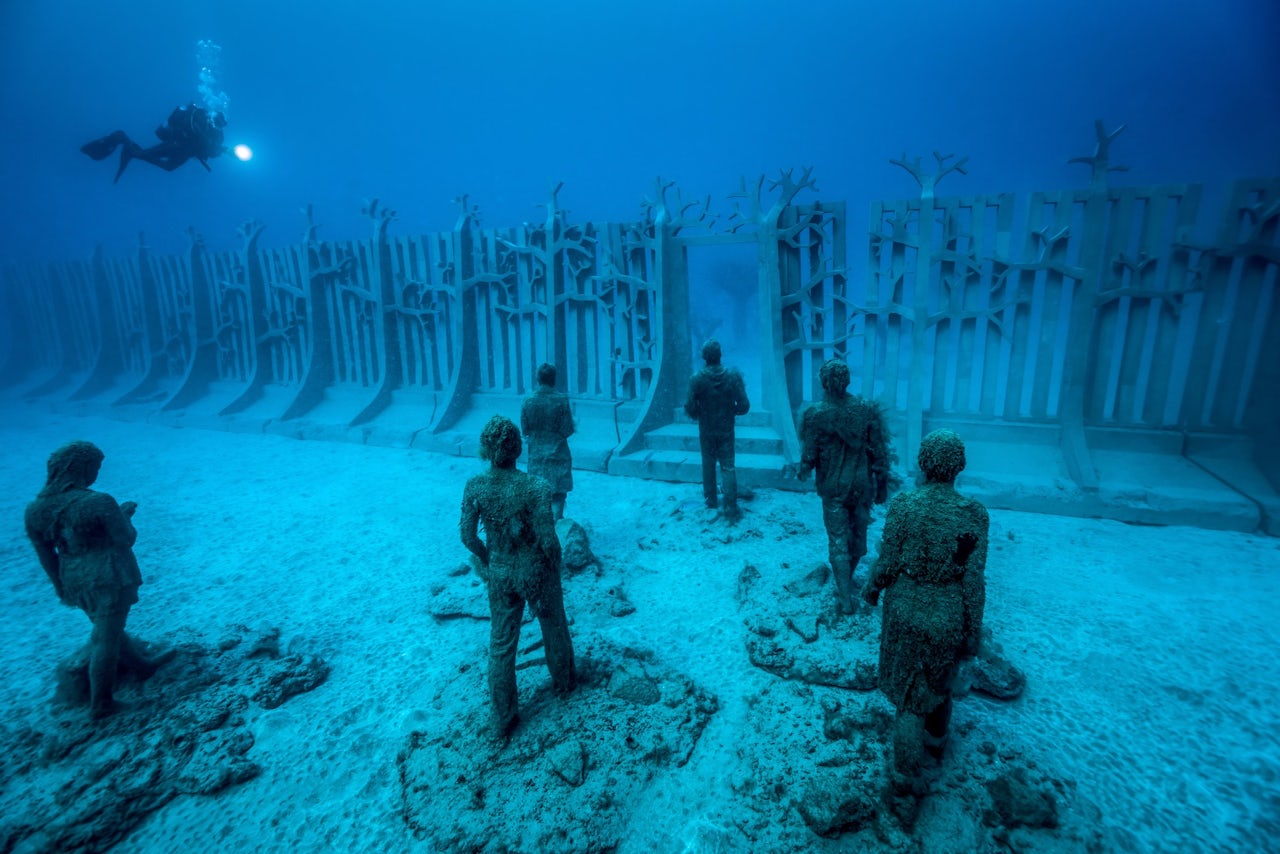Tuesday marked the inauguration of Museo Atlántico, a museum located roughly 50 feet below the ocean off of the coast of Lanzarote in the Canary Islands.
The museum is the work of Jason deCaires Taylor, a sculptor and professional underwater photographer from the UK who has been producing underwater sculptures around the world for the last decade. The museum’s construction began in February 2016 and wrapped up in December, but Jan. 10 marks its official unveiling.
Visitors must pay about $15 for a boat ride to the museum in order to access the exhibits, plus the cost of renting their own scuba gear. (Snorkeling costs less, but the museum is too deep to see the exhibits well without scuba gear.) There they will find an unsettling array of statues and large-scale architectural monuments covering an area of nearly 27,000 square feet.
Like a normal museum, visitors are not allowed to touch the displays — the statues are meant to promote coral and algae growth, which are sensitive to human contact. Visitors can tour the museum for an hour maximum and must be accompanied by a guide.
The museum is designed to create a large-scale artificial reef that will attract local fish species while also raising questions about the commodification of natural resources. It's also meant to heighten awareness about the threats facing the world’s oceans and particularly the reefs, which are experiencing unprecedented destruction from human development.
Since construction on the museum began last February, some of the first installations have already seen a 200 percent increase in biomass, as well as the occasional visit from rare aquatic species like the angel shark, according to The Guardian.
The actual benefit of artificial reefs is a matter of debate, however. While some studies have shown that artificial reefs promote the population growth of local marine life, other environmentalists argue that artificial reefs serve only to concentrate existing populations of aquatic life in one area, which can disturb the balance of pre-existing ecosystems.
The museum contains 12 different installations featuring a total of 300 statues, which were cast from volunteers recruited from local communities on the islands. The art ranges from a 100-foot-long wall that weighs 100 tons, titled "The Portal," a large flatbed mirror reflecting the surface of the ocean, to "The Human Gyre," a big circle formed of a pile of human figures in repose.









